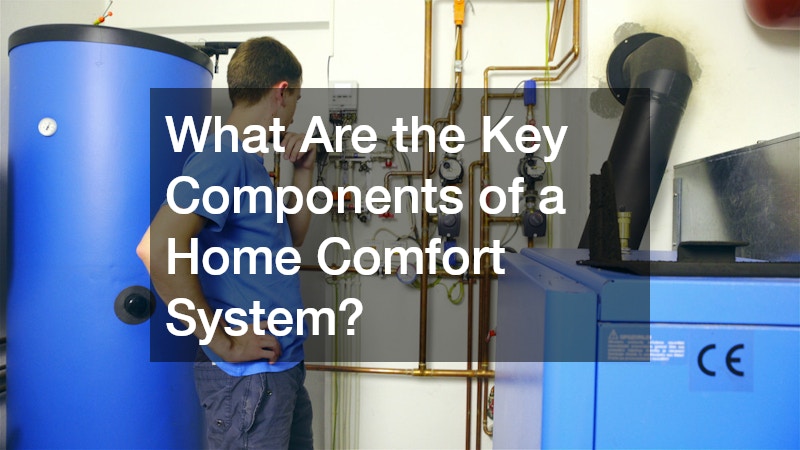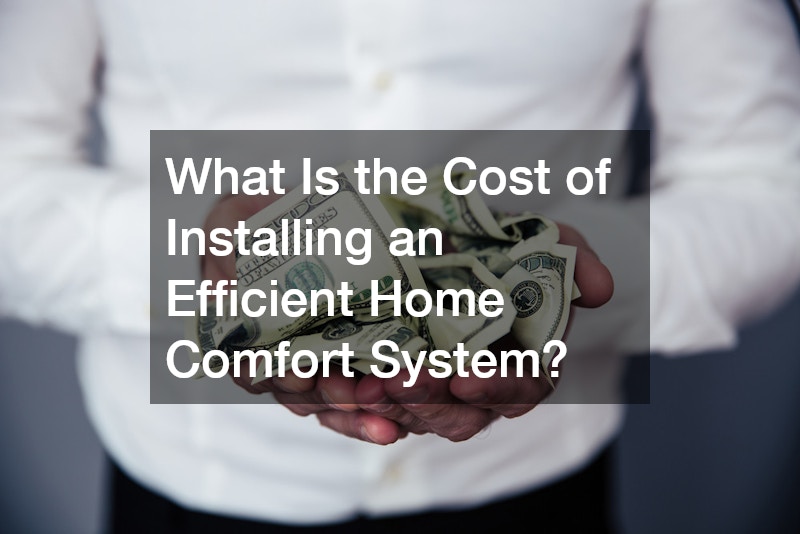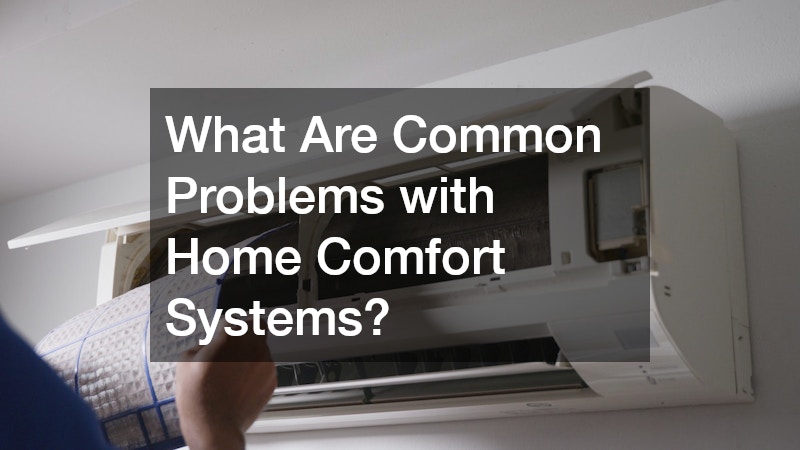Exploring Energy Efficiency
A well-designed and efficient home comfort system is the heart of a comfortable and energy-conscious household. Whether it’s sweltering heat in the summer or bitter cold in the winter, an efficient system ensures that your indoor environment remains stable, healthy, and enjoyable. These systems aren’t just about temperature regulation—they influence air quality, humidity levels, and overall energy efficiency. With rising utility costs, fluctuating fuel prices, and growing awareness of environmental impact, more homeowners are prioritizing sustainable, energy-efficient solutions, including those that utilize alternative fuel sources like propane tanks.
But energy efficiency goes beyond simply installing the latest technology. It requires a thoughtful approach to design, maintenance, usage, and long-term planning. Homeowners need to understand what components are involved, how different elements work together, and what responsibilities come with upkeep. From smart thermostats to radiant floor heating, these systems offer tremendous benefits—but also demand careful attention.
This article outlines 10 essential realities of owning efficient home comfort appliances. Whether you’re planning a new installation or seeking to upgrade an existing setup, understanding these factors can help you make smarter decisions, maximize efficiency, and protect your investment over time.
1. What Are the Key Components of a Home Comfort System?

An efficient home conditioning system isn’t a single appliance but a network of interconnected components that work together to maintain ideal indoor conditions. Key elements typically include a heating unit (such as a furnace or boiler), a cooling system (usually central air conditioners or heat pumps), ventilation components (like ducts and vents), and a thermostat. In high-efficiency systems, you might also find air purifiers, humidifiers, and advanced filtration units.
Some homeowners incorporate radiant heating systems beneath floors, geothermal heat pumps, or solar thermal panels for added efficiency and sustainability. These specialized elements provide targeted comfort while reducing dependence on traditional energy sources. Plumbing systems also integrate with home comfort elements, especially in setups involving boilers or radiant floor heating, where heated water flows through pipes to distribute warmth.
Each component must be compatible and properly sized to the home’s layout and insulation level. An undersized furnace or poorly insulated ductwork, for example, can negate even the most efficient system’s benefits. Understanding these components—and ensuring they’re working in harmony—is the foundation for a high-performing and efficient household.
2. How Do Efficiency Ratings Impact Energy Use?
Efficiency ratings are a key factor in determining how well your home comfort appliances use energy and how much you’ll pay in utility bills. Most heating and cooling systems are rated using energy company industry standards such as SEER (Seasonal Energy Efficiency Ratio) for air conditioners and AFUE (Annual Fuel Utilization Efficiency) for furnaces. Higher ratings typically mean the system converts more energy into heating or cooling with less waste.
Energy companies often offer rebates or incentives to homeowners who choose high-efficiency models. These programs aim to reduce strain on the electrical grid and promote sustainability. When paired with energy audits or smart metering, you can identify where energy loss is occurring and adjust your system accordingly.
In an efficient home comfort system, each component’s rating contributes to the overall performance. It’s not just about buying the unit with the best label—it’s also about how your ductwork, insulation, windows, and even plumbing systems are optimized. Paying attention to these ratings can result in substantial savings over time, especially in areas with extreme seasonal temperatures.
3. What Role Does Regular Maintenance Play?

Routine maintenance is one of the most important—and often overlooked—aspects of owning efficient home comfort appliances. Even the most advanced units will deteriorate in performance without regular servicing. Tasks such as filter replacement, duct cleaning, and system checks help ensure optimal function and energy efficiency.
Furnace repair is a common maintenance task that can impact both comfort and safety. A neglected furnace may struggle to heat your home adequately, consume more energy, or even present fire hazards. Similarly, air conditioners need regular checks to prevent refrigerant leaks, blocked coils, or electrical issues. Maintenance ensures these systems operate within manufacturer specifications, extending their useful life and reducing breakdown risks.
Many HVAC service providers offer annual maintenance plans, which include scheduled inspections and minor repairs. These services are particularly helpful because they catch problems before they escalate into major issues. In the long run, proactive maintenance saves homeowners money and protects the system’s efficiency.
4. How Can Smart Technology Enhance My Home Comfort System?
The integration of smart technology has revolutionized the functionality and efficiency of home comfort appliances. Smart thermostats, for example, learn your schedule and preferences, adjusting heating and cooling to match your lifestyle while conserving energy when you’re away. Some systems even provide real-time feedback and suggestions to optimize performance.
Advanced radiant heating systems now incorporate smart sensors and mobile app controls, allowing homeowners to manage room-by-room temperatures with precision. This not only improves comfort but ensures that energy is only used where it’s needed. Smart vents, leak detectors, and humidity sensors are additional tools that add intelligence and adaptability to your comfort system.
With smart home integration, you can also monitor usage data and receive maintenance alerts. For example, a smart thermostat might notify you if your system is cycling too often—a potential sign of a clogged filter or failing component. These technologies don’t just add convenience; they actively contribute to energy savings and system longevity.
5. What Is the Cost of Installing an Efficient Home Comfort System?

The upfront cost of installing high-efficiency home comfort appliances can be significant. Depending on your location, home size, and system complexity, costs can range from a few thousand to tens of thousands of dollars. For example, installing a new high-efficiency furnace or heat pump might cost $5,000–$12,000, while a full system that includes air conditioning, radiant heating, and smart controls could exceed $20,000.
Plumbing integration, especially for radiant heating systems, adds another layer of cost. These systems require extensive pipework and often tie into your home’s hot water supply. Installation may involve modifying flooring or walls, increasing labor costs. However, these investments can pay off through energy savings, comfort improvements, and increased property value.
It’s important to view this cost as a long-term investment rather than a one-time expense. Many homeowners recoup costs through lower utility bills, government rebates, or increased home resale value. Financing options and energy efficiency loans can also make installation more affordable without sacrificing quality.
6. How Can I Reduce Energy Costs with My Home Comfort System?
Reducing energy costs starts with choosing high-efficiency equipment, but it also requires optimizing usage and maintaining your system. Properly sealing and insulating your home, for example, prevents energy loss and allows your system to work more efficiently. Even simple actions like using blackout curtains in summer or ceiling fans in winter can significantly reduce energy demand.
Air conditioners, particularly older models, are notorious for their high energy use. Replacing them with energy-efficient units can result in immediate savings. Adding programmable or smart thermostats allows you to set temperature schedules that minimize energy use when you’re away or asleep. Regular maintenance, such as cleaning coils and replacing filters, ensures your system doesn’t have to work harder than necessary.
Additionally, strategic upgrades—such as adding zoning systems or variable-speed motors—allow greater control over when and where energy is used in your home. Over time, these upgrades can reduce monthly costs and prolong the lifespan of your system.
7. What Are Common Problems with Home Comfort Systems?

Even with regular maintenance, home comfort systems are subject to occasional issues. Common problems include airflow restrictions, refrigerant leaks, sensor malfunctions, and mechanical wear. One particularly frustrating issue is a main line clog, which can affect both heating and cooling functions, especially if the system relies on water flow for operation, such as in radiant heating or boiler systems.
Blocked air ducts or dirty filters can also reduce efficiency and stress the system, potentially leading to more serious failures. Inconsistent temperatures, strange noises, or unexpectedly high energy bills are often the first signs of trouble. Quick diagnosis and repair are crucial to preventing minor issues from escalating.
Regular system monitoring—especially with smart technology—can help detect issues early. Homeowners should also remain vigilant for signs of moisture accumulation, mold, or unusual odors, which could indicate hidden system failures. Addressing these problems promptly ensures continued comfort and efficiency.
8. How Long Does a Home Comfort System Typically Last?
The lifespan of a home comfort system depends heavily on the quality of components, frequency of maintenance, and local climate conditions. On average, furnaces and air conditioners last 15–20 years, while boilers and radiant heating systems can operate for 20–30 years if well-maintained.
Elements like ductwork, thermostats, and ventilation systems may have longer or shorter lifespans depending on usage and material quality. Tasks like sewer line cleaning and ensuring proper drainage around HVAC units also help prevent premature system wear, especially in humid or wet climates where mold and corrosion can be issues.
A proactive maintenance plan and occasional upgrades can extend the life of your system. Replacing worn parts, updating outdated components, and keeping up with cleaning and inspections ensures your home remains comfortable and energy-efficient for decades.
9. How Do I Choose the Right Home Comfort System for My Needs?
Choosing the right system begins with understanding your home’s specific needs and constraints. Factors such as square footage, insulation quality, regional climate, and household occupancy all play a role in determining the appropriate system size and type. Consulting with a licensed HVAC professional can help assess these factors accurately.
One overlooked consideration is how your septic tank and drainage systems interact with your heating and cooling needs—particularly for systems involving water heating or radiant flooring. A poor drainage setup can lead to water damage or inefficiencies if leaks occur or runoff isn’t properly managed.
When choosing a system, homeowners should consider both short-term affordability and long-term performance. While more advanced systems may carry higher upfront costs, their increased efficiency and durability often make them a more cost-effective choice over time. Be sure to research available rebates and incentives, which can further offset
installation expenses.
10. How Do Season Changes Affect My Home Comfort System?
Seasonal changes significantly influence how your home comfort appliances perform. In winter, systems work harder to maintain warmth, which places stress on furnaces, boilers, and radiant heating elements. Conversely, summer demands intensive cooling, especially in humid climates where air conditioners must also dehumidify indoor air.
Your water heater also works in tandem with your heating system, particularly in setups that involve hot water circulation. During colder months, your water heater will use more energy to maintain desired temperatures, which can impact overall system efficiency. Seasonal inspections ensure everything is adjusted and optimized for changing demands.
To prepare for seasonal transitions, schedule routine checkups, change filters, test thermostats, and inspect external components. Ensuring your system is season-ready reduces the risk of emergency breakdowns, maintains energy efficiency, and ensures year-round comfort in your home.
Efficient Living
Owning efficient home comfort appliances is a significant investment—but one that pays off in both comfort and cost savings when managed correctly. From choosing the right components and understanding efficiency ratings to embracing smart technologies and committing to regular maintenance, homeowners can create a living environment that’s not only cozy but also environmentally responsible and financially sound.
By addressing the realities outlined above, homeowners can maximize the return on their investment and extend the life of their home comfort appliances. Efficiency isn’t just about lower energy bills—it’s about enhancing daily life, preserving your home’s infrastructure, and contributing to a sustainable future. With knowledge and commitment, owning an efficient home conditioning system becomes a source of comfort and confidence for years to come.
Additionally, understanding the interplay between different home systems—such as plumbing, ventilation, and heating—can help prevent costly repairs and inefficiencies down the line. A well-maintained home conditioning system doesn’t operate in isolation; it relies on the health of your entire home infrastructure. Whether it’s coordinating sewer line cleaning with HVAC inspections or ensuring your water heater supports seasonal demands, a holistic approach to home maintenance can significantly improve performance and longevity. By staying proactive and informed, homeowners not only protect their investment but also ensure consistent, year-round comfort for themselves and their families.
